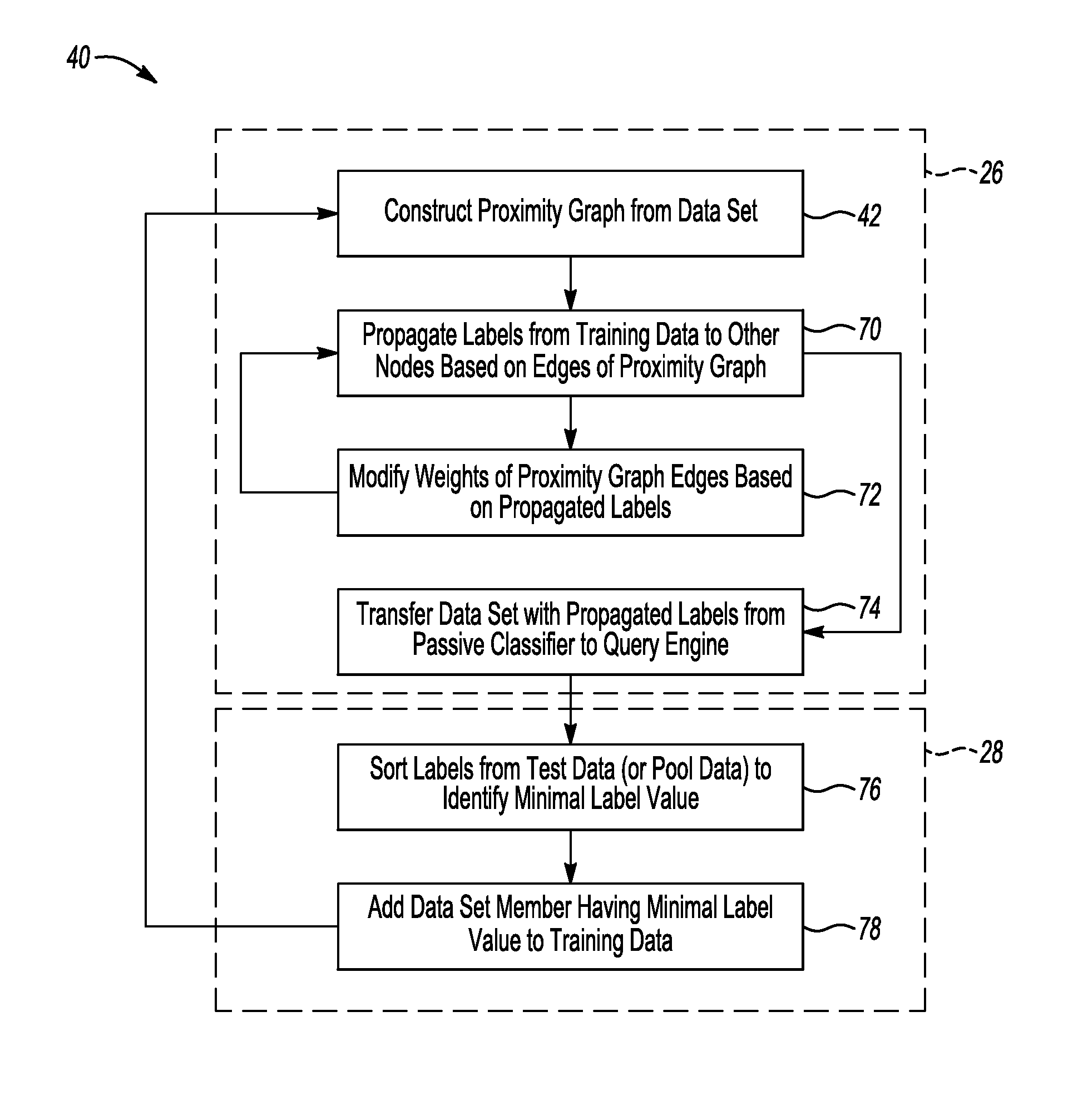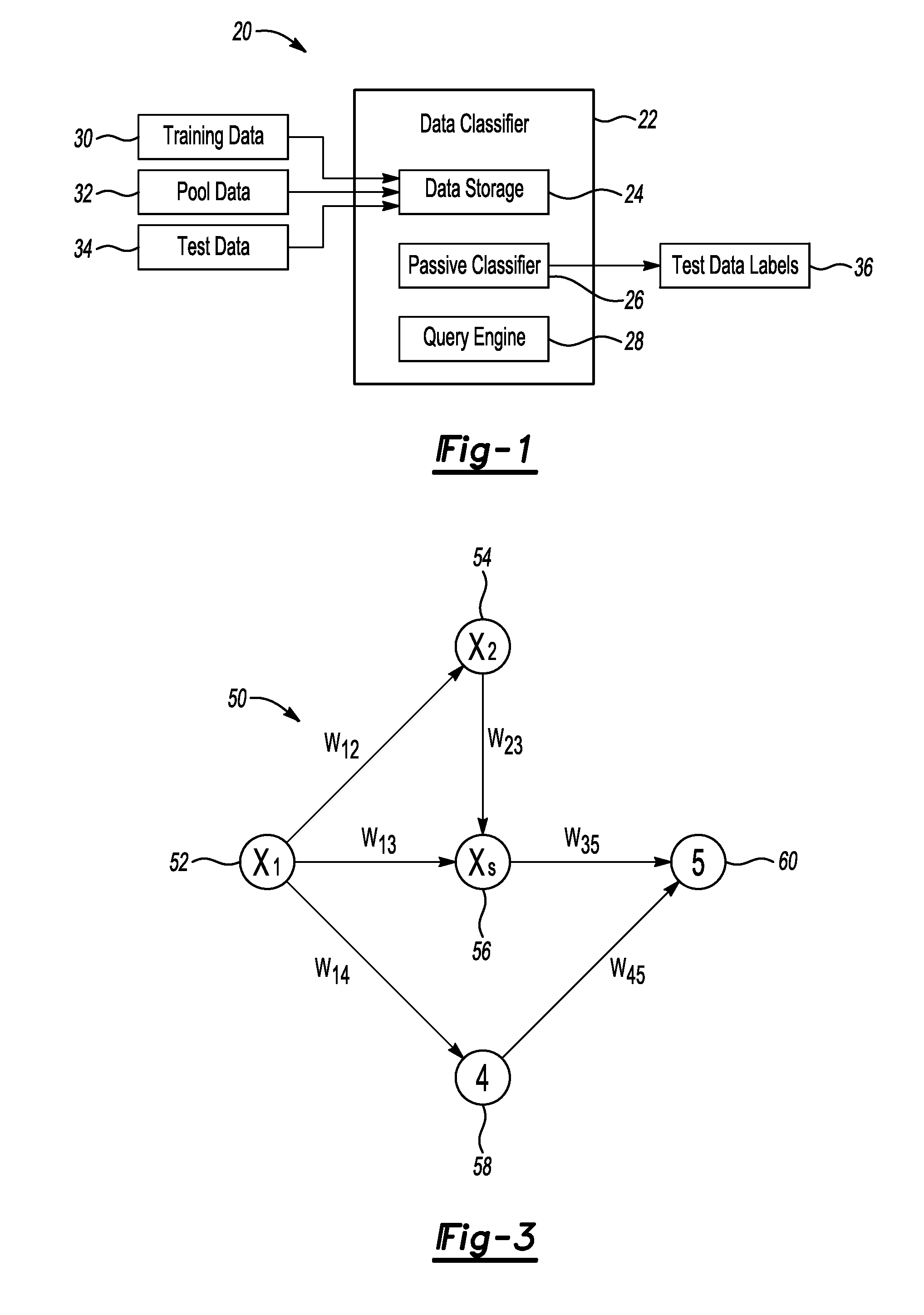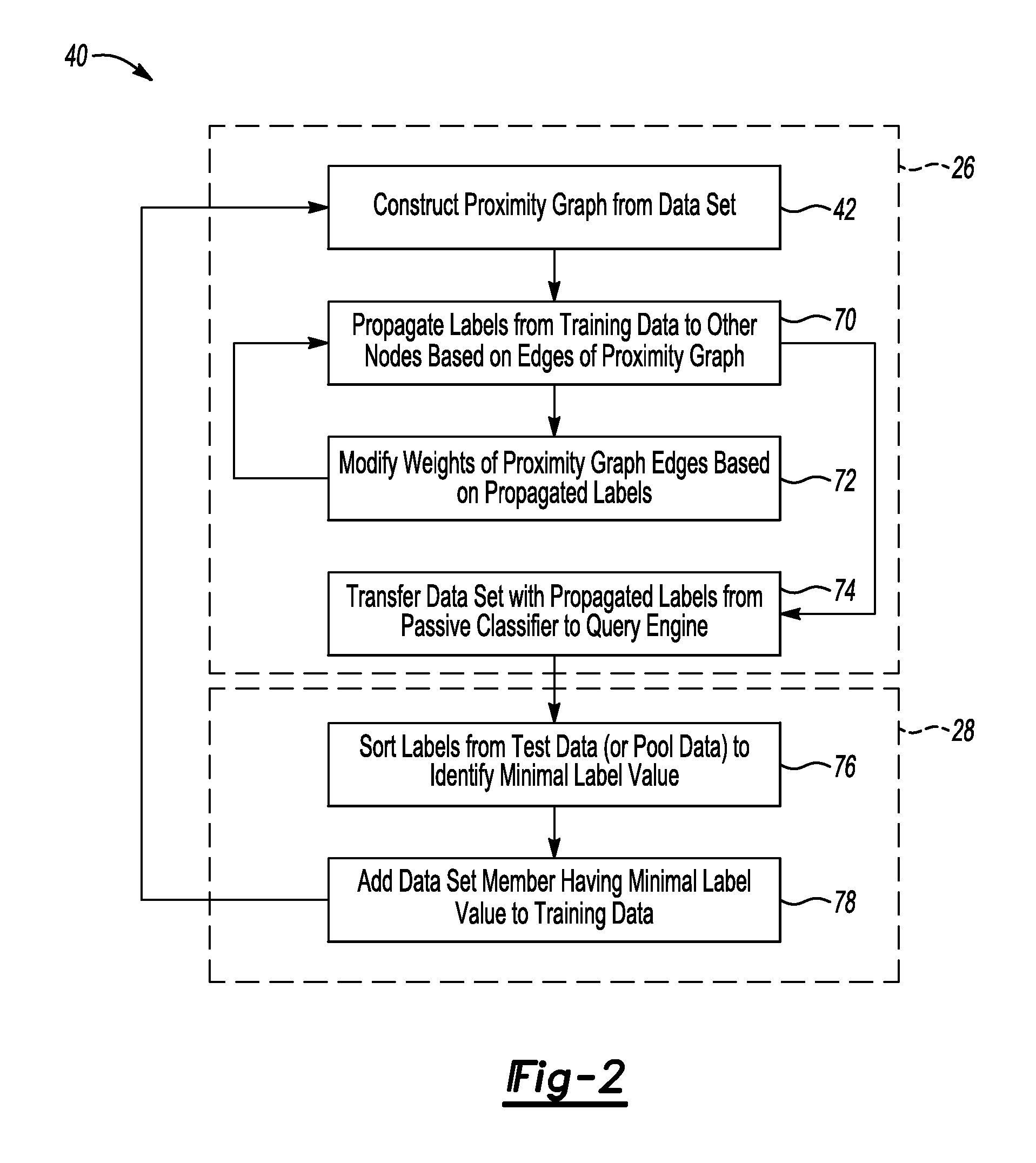Data classifier using proximity graphs, edge weights, and propagation labels
a technology of proximity graphs and labels, applied in the field of data classification, can solve problems such as detracting from the potential value, computational resources required, and inefficient handling of large data sets
- Summary
- Abstract
- Description
- Claims
- Application Information
AI Technical Summary
Benefits of technology
Problems solved by technology
Method used
Image
Examples
example
[0032]Another way in which the example classifier device 22 differs from previous classifiers is that the query engine identifies the data entry to add to the training data set based on the predicted label values of the pool data or test data and the influence that each node has on its neighbors in the proximity graph instead of using an additional computation based on a predetermined criteria.
[0033]The combination of features described above may provide the ability to significantly reduce the time it takes to predict labels for a large data set and it may reduce the amount of computing resources required to process the information. Instead of waiting weeks or months for results, which may be the case with previous classification techniques, the example device and method described above can provide results in minutes. Additionally, such results may be obtained on much larger data sets and the results are more accurate than those possible with some previous classification techniques....
PUM
 Login to View More
Login to View More Abstract
Description
Claims
Application Information
 Login to View More
Login to View More - R&D
- Intellectual Property
- Life Sciences
- Materials
- Tech Scout
- Unparalleled Data Quality
- Higher Quality Content
- 60% Fewer Hallucinations
Browse by: Latest US Patents, China's latest patents, Technical Efficacy Thesaurus, Application Domain, Technology Topic, Popular Technical Reports.
© 2025 PatSnap. All rights reserved.Legal|Privacy policy|Modern Slavery Act Transparency Statement|Sitemap|About US| Contact US: help@patsnap.com



